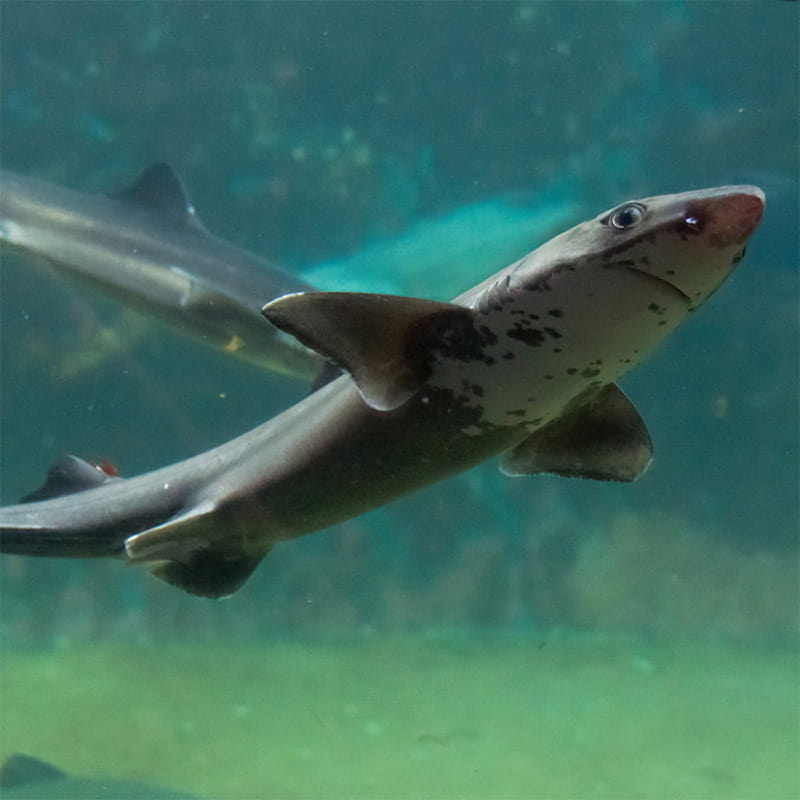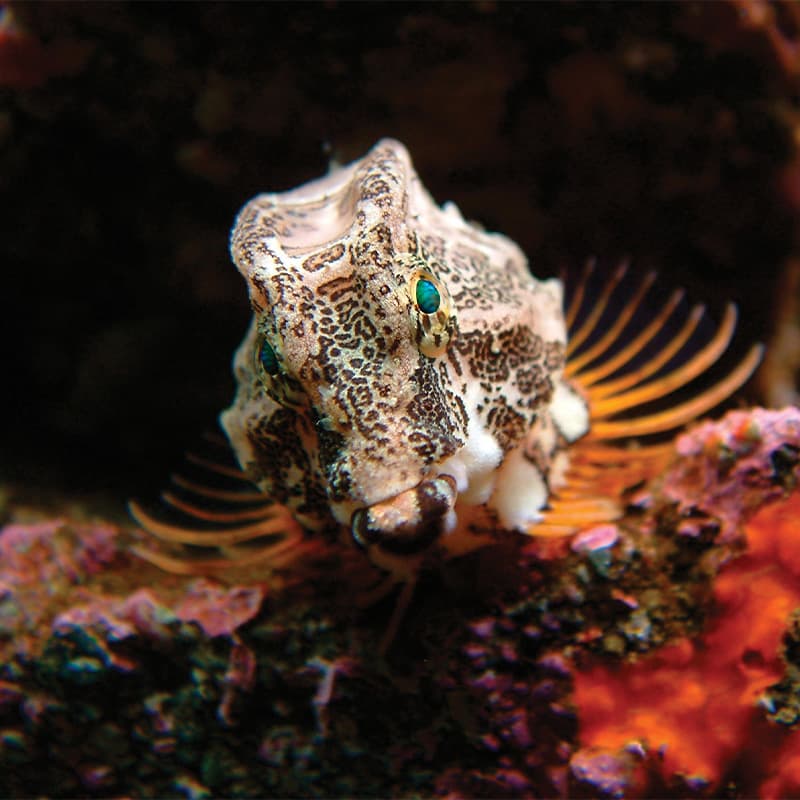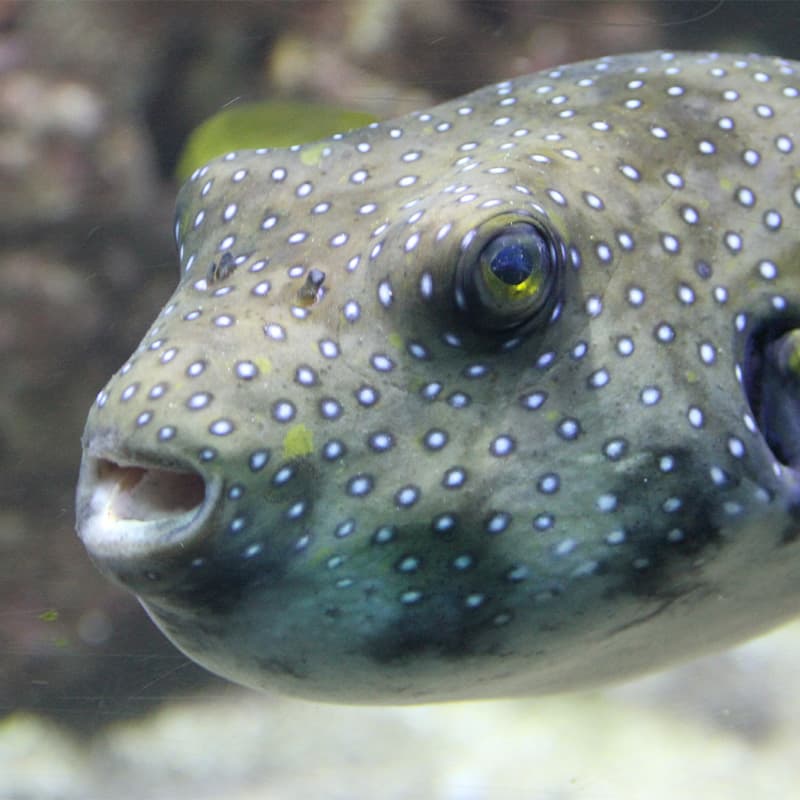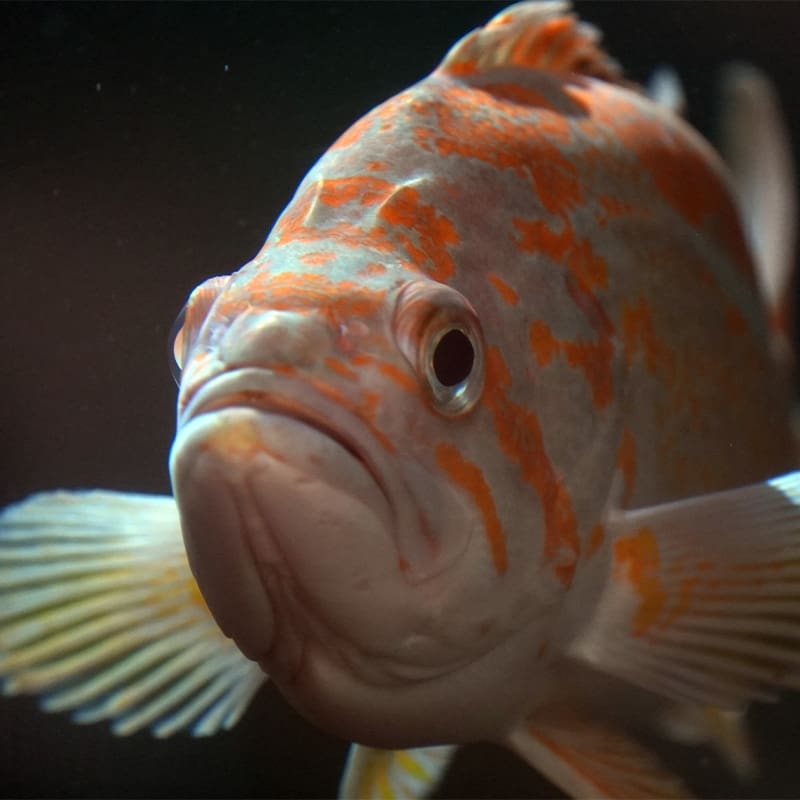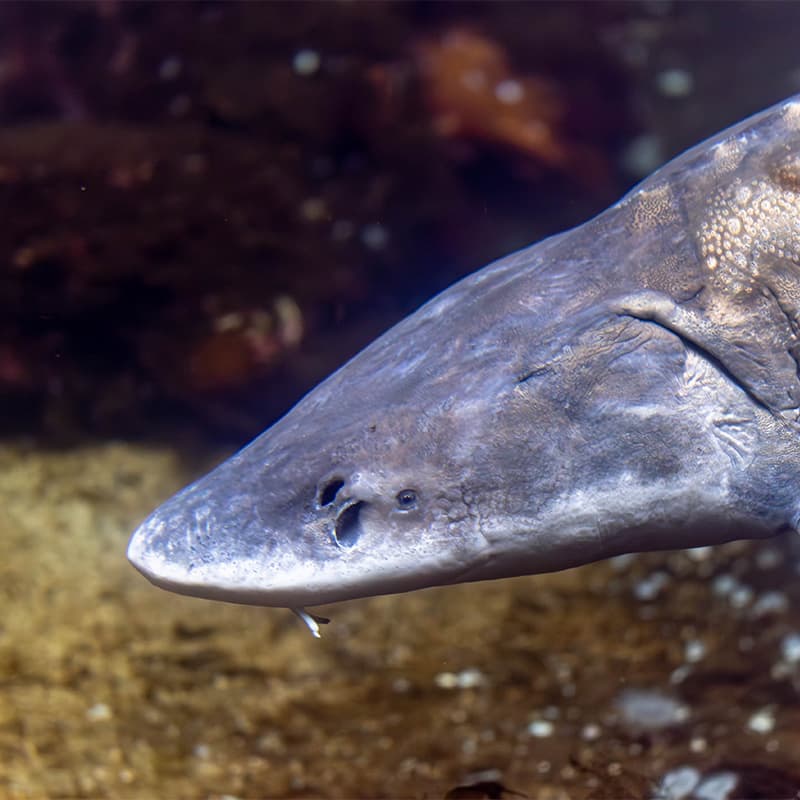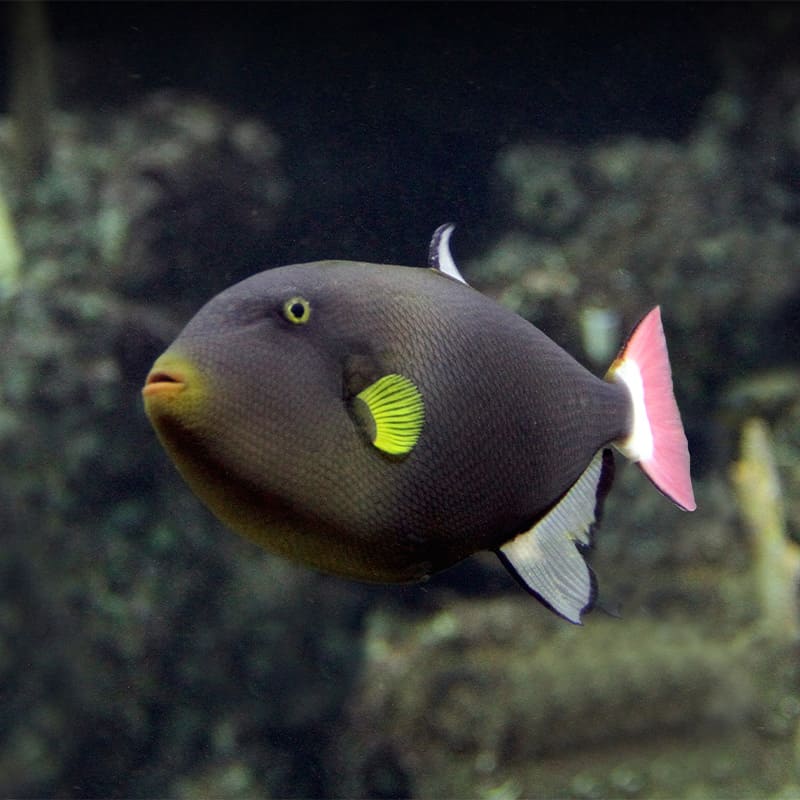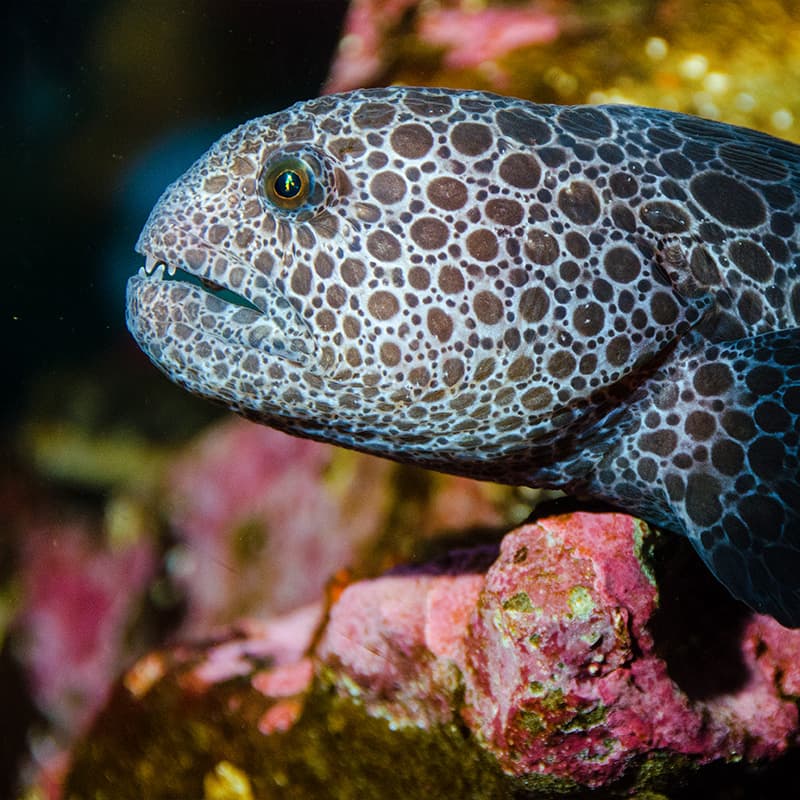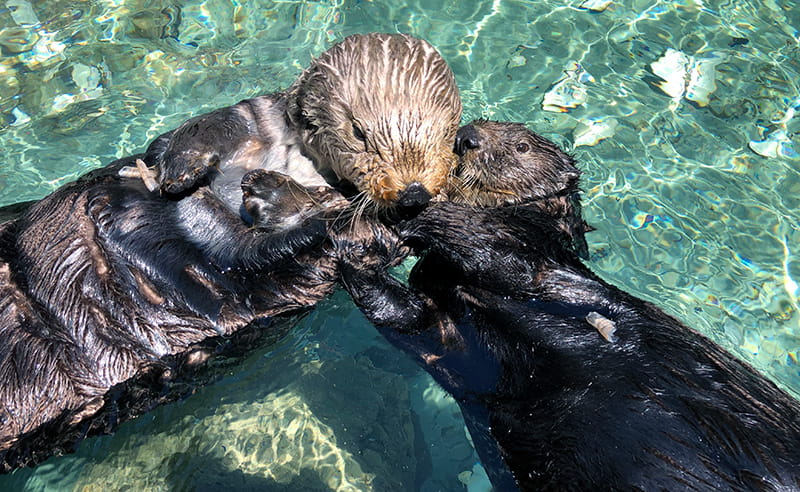- Fish
Whitespotted boxfish
The “armored” fish with a secret weapon
Whitespotted boxfish, Ostracion meleagris, are found throughout the Pacific and Indian oceans, making their homes in reef ecosystems at depths ranging from just over three feet to nearly 100 feet. Although small, growing to less than 10 inches, they are mighty—with interesting anatomy and a potent weapon to keep predators at bay. Keep reading to learn more about these dotted dynamos!
At the Aquarium
- Pacific coral reef, Pier 59
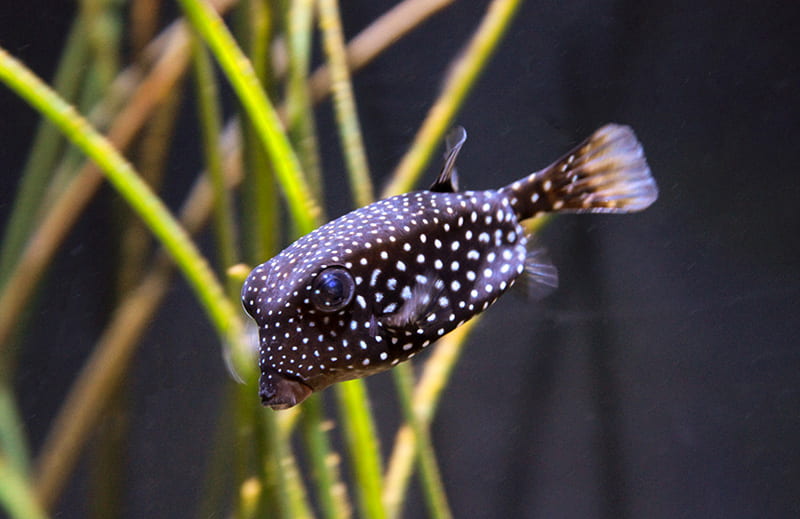
One of these fish is not like the other
Like northern fur seals in the marine mammal world, whitespotted boxfish exhibit strong sexual dimorphism, or distinct differences in size or appearance between the sexes. While size is the difference for fur seals, with whitespotted boxfish, it’s color. Females are blackish with white spots; males have the same coloration on their backs but their sides are blue with bright yellow bands and spots.
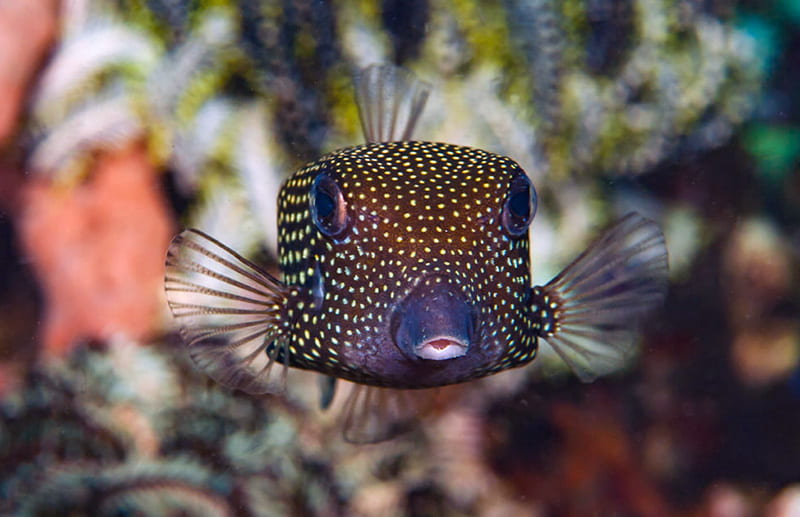
Jack-in-the-box, meet fish-in-a-box
Whitespotted boxfish are well-named, with angular, oblong bodies that look, well, downright boxy. And that’s because inside those bodies is an actual box made of thickened and fused scale plates. Only their fins, tails, eyes and mouths protrude from this boxy structure—with their organs protected inside their internal coats of armor.
Slime to the rescue
Because of their unusual anatomy, whitespotted boxfish aren’t the fastest swimmers. But they have another tool in their survival “box”—when threatened, they excrete poisonous, slimy mucus through their skin. The mucus disperses through the surrounding water to irritate and ward off or even kill potential predators. This handy mode of defense means whitespotted boxfish have few natural predators: mostly larger fish and sharks.
All in the family
Whitespotted boxfish live in small groups with one male and several females. Males are very territorial and chase off other males that come too close. At mating time, both male and female swim several feet above the reef, where the female releases eggs and the male releases sperm to fertilize them. Juveniles are often seen nestled in the spines of urchins. These family groups hunt on their own, foraging for sponges, worms, sea squirts and other small invertebrates (or animals without backbones).
Make a difference for whitespotted boxfish
This species hasn’t been evaluated by the International Union for the Conservation of Nature, the group that generates the Red List of Threatened Species™, so we don’t know if their populations are endangered. We do know, though, that humans pose a threat to them—both because they’re popular in home aquariums and, more importantly, because of human-caused impacts like plastic pollution and climate change. Want to make a difference for these beautiful fish? Visit our Act for the Ocean page to learn about easy lifestyle changes to protect their habitats and our one world ocean.
Quick facts
Keep a keen eye! Boxfish are less than 10 inches long.
Their iconic shape is due to an actual box made of thickened and fused scale plates on their insides.
When threatened, these fish excrete poisonous, slimy mucus through their skin.
